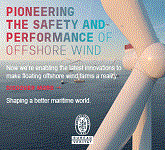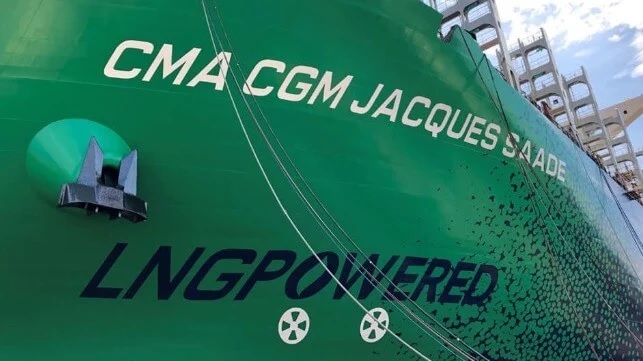DNV clears Oceans of Energy’s offshore solar design for North Sea conditions
DNV, the independent energy expert and assurance provider, has issued a statement of conformity to Dutch floating solar company Oceans of Energy for its offshore solar solution, which clears it for deployment in rough sea conditions like those in the North Sea.
The recognition not only validates feasibility but also establishes a clear path for future scalability of offshore solar, marking also a significant milestone in the development of Oceans of Energy’s technology.
The statement of conformity verifies that the design methodology complies with the comprehensive set of requirements and guidelines provided by DNV’s Recommended Practice for the design, development, operation and decommissioning of floating solar photovoltaic (FPV) systems – DNV-RP-0584, the world’s first of its kind, published in 2021.
| Read More: DNV verifies HD Hyundai’s HiNAS Control system |
With ambitions to reach 150MW-scale offshore solar farm systems by 2028, Oceans of Energy sought independent confirmation of their technology and system design, and contracted DNV to first deliver the aforementioned statement of conformity, and, in a later phase, conduct a prototype verification of their second-generation offshore solar farm design for rough North Sea conditions, as implemented in the current pilots.
The North Sea Two location is operational at 400kW and set to expand to 1MW in the coming year. The future holds even greater ambitions with North Sea Three projected to reach a multiple MW system size, and subsequent projects expected to reach tens of MW.
DNV’s statement of conformity confirms that Oceans of Energy’s basis of design complies with the requirements of DNV-RP-0584 for certain operational limits, thus providing crucial risk reduction for North Sea Two and forthcoming solar farms within offshore wind farms.
| Read More: DNV okays HD KSOE’s hydrogen system for liquefied hydrogen carrier |
This independent confirmation of their technology and system design basis enables Oceans of Energy to scale in a safe and reliable way.
Ditlev Engel, CEO of energy systems at DNV, said: “This verification is of global relevance, as the deployment and scaling of offshore solar technologies are essential to meet climate challenges worldwide.
“Our partnership will not only drive offshore solar for the energy transition in Europe, particularly in the North Sea region, but also serve as a model for implementation globally.”
Allard van Hoeken, CEO of Oceans of Energy, added: “Oceans of Energy is proud to be a pioneer. Not only with our worldwide unique four years of offshore operational experience and our first commercial projects including at the Crosswind ‘Hollandse Kust Noord’ windfarm , but also in driving a larger stakeholder agenda that will benefit the whole offshore energy industry.
“Integrating offshore solar in offshore wind projects can result in up to five times more energy generated per km2 sea space per year and can be integrated on the offshore wind farm electrical infrastructure. Together with DNV we are applying best practices to have future large-scale projects certified, which will enable the investments associated with scaling our new energy generation sector.”
Verification and certification are crucial in attracting the necessary investments for scaling up, and as the first offshore solar basis of design to receive a statement of conformity in the EU, Oceans of Energy’s system showcases the feasibility of key aspects of solar technologies at rough environmental conditions, like in the North Sea, and sets the stage for future advancements.
With its immense potential for energy production, the North Sea is destined to become Europe’s power plant, and this project plays a role in realizing the region’s ambitious targets set in the Esbjerg and Ostend Declaration.
Furthermore, it aligns with the Netherlands’ commitment to reduce CO2 emissions by at least 55% by 2030, as announced by minister of climate and energy, Rob Jetten. The Dutch government has recognized the importance of offshore solar, with the announced ambition to have 3GW installed by 2030 equivalent in scale to 3000 football fields.
Source: Offshore Energy
| Read Here | |
 |
|







































